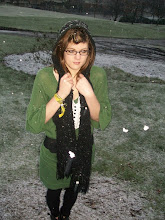
This is my final concept board for project 5.
I have featured my concept in 3 different locations including, the end of a bus stop advert, an in store computer and a New Look store window.
The board also shows how the concept works.
1. The models face is cut out and replaced with a screen.
2. A camera is mounted nearby and linked to the screen.
3. When the camera senses motion it turns on and the screen activates.
4. The screen then displays the picture being transferred from the camera.
5. The person stood in front of the camera has their face on the models body.
This concept allows the consumer to see what an outfit would look like on. It allows them to see if the garment suits their face shape/hair colour etc.
The in store computer also tells the consumer whether to garment is in stock and in which sizes. It will also tell the consumer where to locate it in store.
























